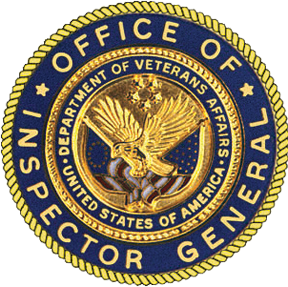Care Failures for a Patient with Alcohol Withdrawal at the Hampton VA Medical Center in Virginia
Report Information
Summary
The VA Office of Inspector General (OIG) conducted a healthcare inspection in response to a congressional referral regarding the care of a patient who was admitted for alcohol withdrawal and later died at the Hampton VA Medical Center (facility) in Virginia.
The OIG identified failures in the management of alcohol withdrawal symptoms of this complex patient by nursing staff and providers. Nursing staff failed to accurately and timely assess the patient’s alcohol withdrawal symptoms and consistently administer medications in adherence with the facility’s Clinical Institute Withdrawal Assessment of Alcohol Scale, Revised (CIWA-AR) protocol used to determine the severity of the symptoms and clinical response. Additionally, the OIG found concerns with the timeliness of nursing staff’s electronic health records (EHR) documentation of CIWA-AR assessment scores. Delayed entries of assessment scores may affect providers’ clinical decisions. These failures may have affected the overall management of the patient’s alcohol withdrawal symptoms.
The OIG determined that facility providers failed to recognize the severity of the patient’s alcohol withdrawal. Based on past medical history and admissions, the patient was considered high risk for developing delirium, a severe form of alcohol withdrawal. According to clinical guidelines, delirium can be effectively treated with a benzodiazepine medication such as lorazepam. The OIG found one provider did not confirm the availability of lorazepam before making a clinical decision to use another medication that was not a benzodiazepine. Another provider documented symptoms suggestive of severe alcohol withdrawal but failed to identify several risk factors of severe withdrawal and treat the symptoms. These failures likely contributed to the patient not being afforded evidence-based care for prevention of delirium and severe alcohol withdrawal.
The OIG made seven recommendations to the Facility Director related to compliance with facility CIWA-AR protocol, CIWA assessment, and the management of severe alcohol withdrawal.
The Hampton VA Medical Center Director directs nursing leaders to review records of medical intensive care unit patients with Clinical Institute Withdrawal Assessment of Alcohol Scale protocol orders to confirm that medical intensive care unit nurses document Clinical Institute Withdrawal Assessment of Alcohol Scale scores consistent with patient’s documented behavior and symptoms and takes actions to address any deficiencies that are identified.
The Hampton VA Medical Center Director confirms that nursing leaders complete review of records of medical intensive care unit patients with Clinical Institute Withdrawal Assessment of Alcohol Scale protocol orders to determine the extent with which administration of medication is in adherence with the protocol and take actions to address any deficiencies that are identified.
The Hampton VA Medical Center Director ensures that a review of records of medical intensive care unit patients with Clinical Institute Withdrawal Assessment of Alcohol Scale protocol orders is completed by nursing leaders to (a) assess the degree of compliance with completing Clinical Institute Withdrawal Assessment of Alcohol Scale assessments based on the last assessment score, as outlined in the protocol, and (b) review the actual time Clinical Institute Withdrawal Assessment of Alcohol Scale is completed in comparison to the time it is documented in the electronic health records to identify significant delays, if any, and based on analysis of findings, takes action to address deficiencies that are identified.
The Hampton VA Medical Center Director works with the facility Chief of Staff to ensure medical intensive care unit providers have reviewed a clinical practice guideline specific to management of alcohol withdrawal from an accredited source, such as The American Society of Addiction Medicine.
The Hampton VA Medical Center Director confirms completion of a review to assess the current process for communicating unit-based medication shortages and how staff can confirm the availability of shortage medications when use of the medication is key to the patient’s treatment and updates the process as warranted.
The Hampton VA Medical Center Director ensures that the facility’s Alcohol Withdrawal Management standard operating procedure aligns with requirements for a standard operating procedure outlined in Veterans Health Administration Notice 2024-09.
The Hampton VA Medical Center Director confirms that training requirements specified in Veterans Health Administration Notice 2024-09 are completed, training attendance is tracked, and a process is in place to monitor accurate and consistent use of the alcohol withdrawal scale identified in the facility standard operating procedure.
